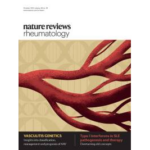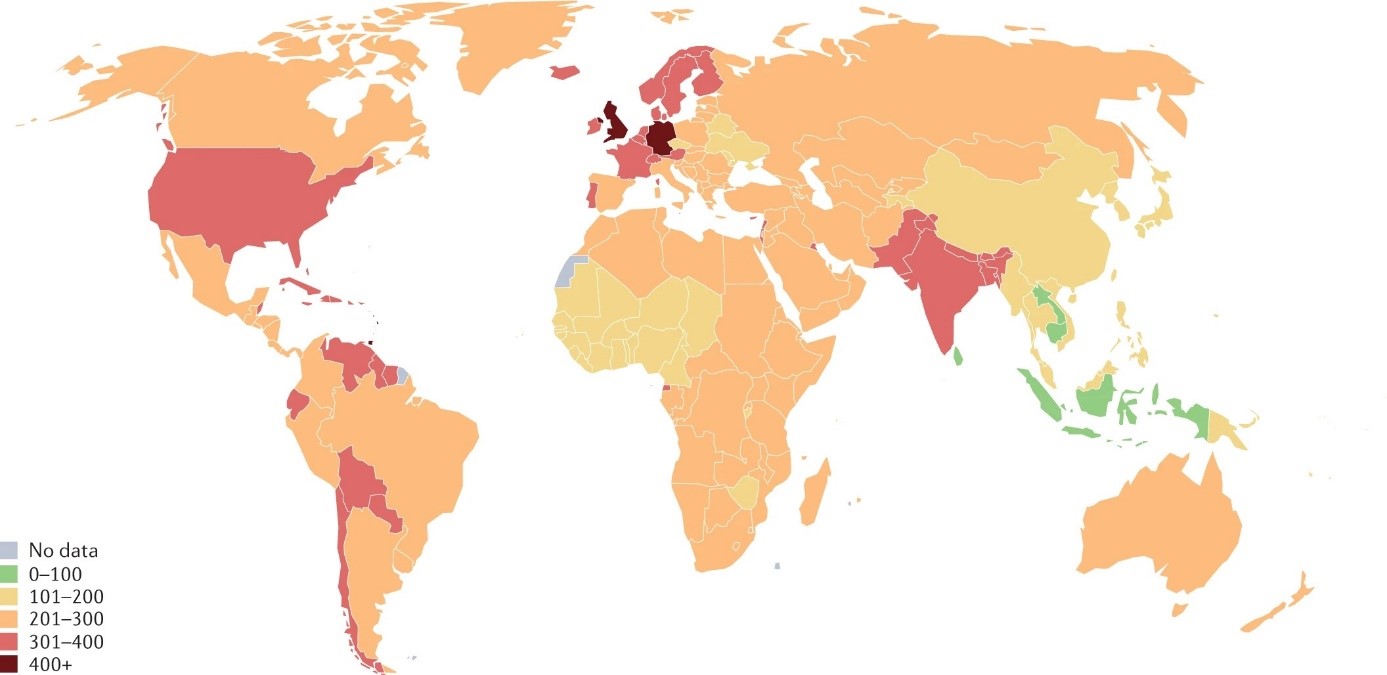 Ревматоидный артрит (РА) — системное аутоиммунное заболевание с преимущественным поражением суставов. Распространенность РА варьируется во всем мире, как правило, достигая наибольшей частоты в индустриально развитых странах, что может быть обусловлено как воздействием факторов риска окружающей среды, так и генетическими факторами, различными демографическими данными и недостаточной отчетностью в других частях мира.
Ревматоидный артрит (РА) — системное аутоиммунное заболевание с преимущественным поражением суставов. Распространенность РА варьируется во всем мире, как правило, достигая наибольшей частоты в индустриально развитых странах, что может быть обусловлено как воздействием факторов риска окружающей среды, так и генетическими факторами, различными демографическими данными и недостаточной отчетностью в других частях мира.
За последние три десятилетия очевиден тренд к снижению тяжести течения РА, что вероятно, отражает изменения в парадигмах лечения и общее улучшение контроля над заболеванием. Другие тенденции включают увеличение распространенности РА. Совокупно факторы риска развития РА включают как модифицируемые, связанные с образом жизни, так и немодифицируемые, такие как генетика и пол. Лучшее понимание естественной истории РА и факторов, способствующих развитию РА в конкретных популяциях, может привести к внедрению конкретных стратегий профилактики этого изнурительного заболевания.
Finckh A, Gilbert B, Hodkinson B, Bae SC, Thomas R, Deane KD, Alpizar-Rodriguez D, Lauper K.
Nature Reviews Rheumatology, 2022 October, volume 18, issue 10, pp 591−602
DOI: 10.1038/s41584−022−827-y
PMID: 36 068 354

Fig. 1. Global prevalence of rheumatoid arthritis.
Global epidemiology of rheumatoid arthritis
Rheumatoid arthritis (RA) is a systemic autoimmune disease that predominantly affects the joints. The prevalence of RA varies globally, with generally a higher prevalence in industrialized countries, which may be explained by exposures to environmental risk factors, but also by genetic factors, differing demographics and under-reporting in other parts of the world. Over the past three decades, strong trends of the declining severity of RA probably reflect changes in treatment paradigms and overall better management of the disease.
Other trends include increasing RA prevalence. Common risk factors for RA include both modifiable lifestyle-associated variables and non-modifiable features, such as genetics and sex. A better understanding of the natural history of RA, and of the factors that contribute to the development of RA in specific populations, might lead to the introduction of specific prevention strategies for this debilitating disease.
